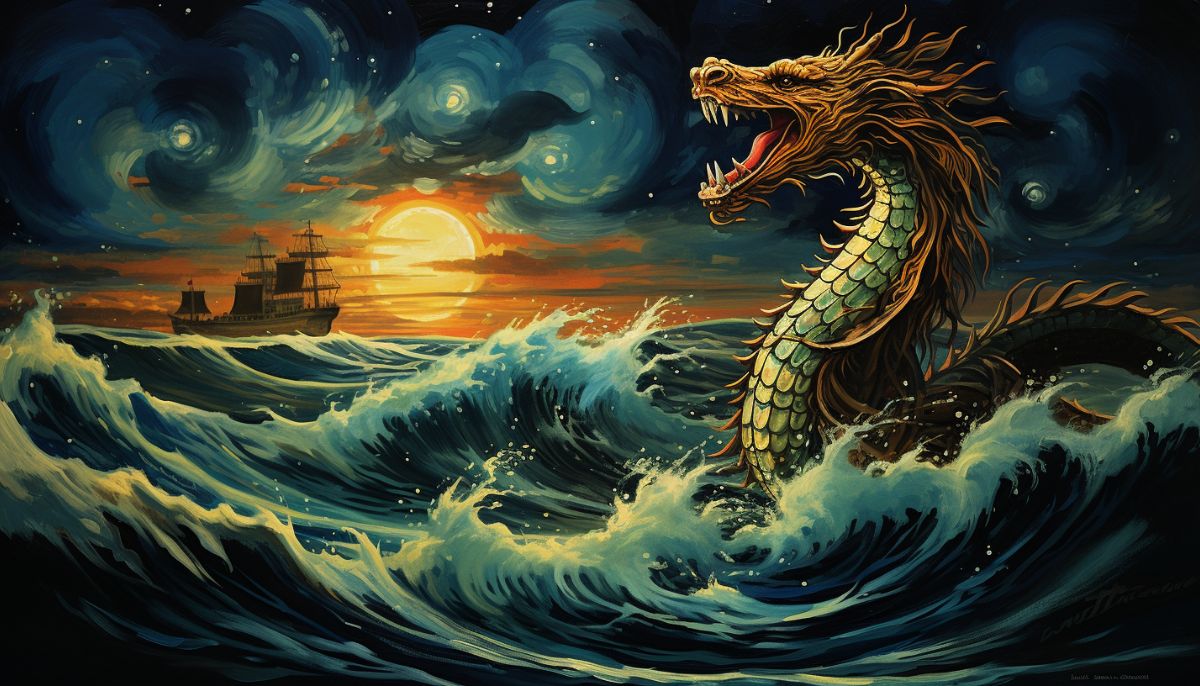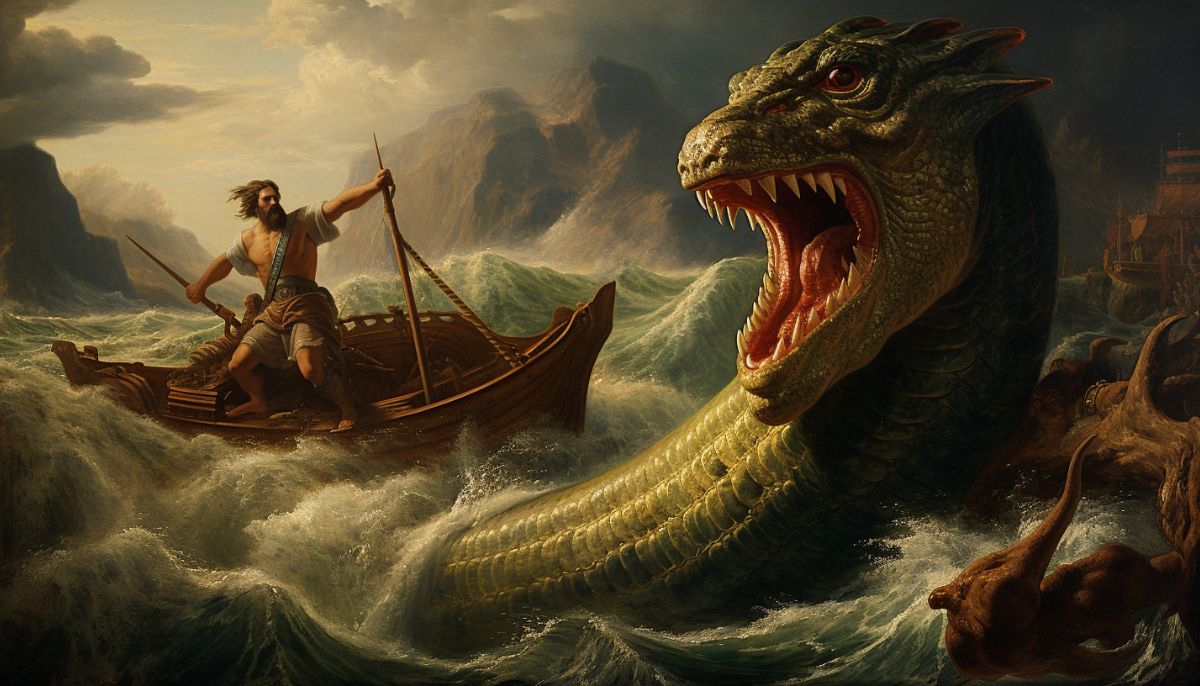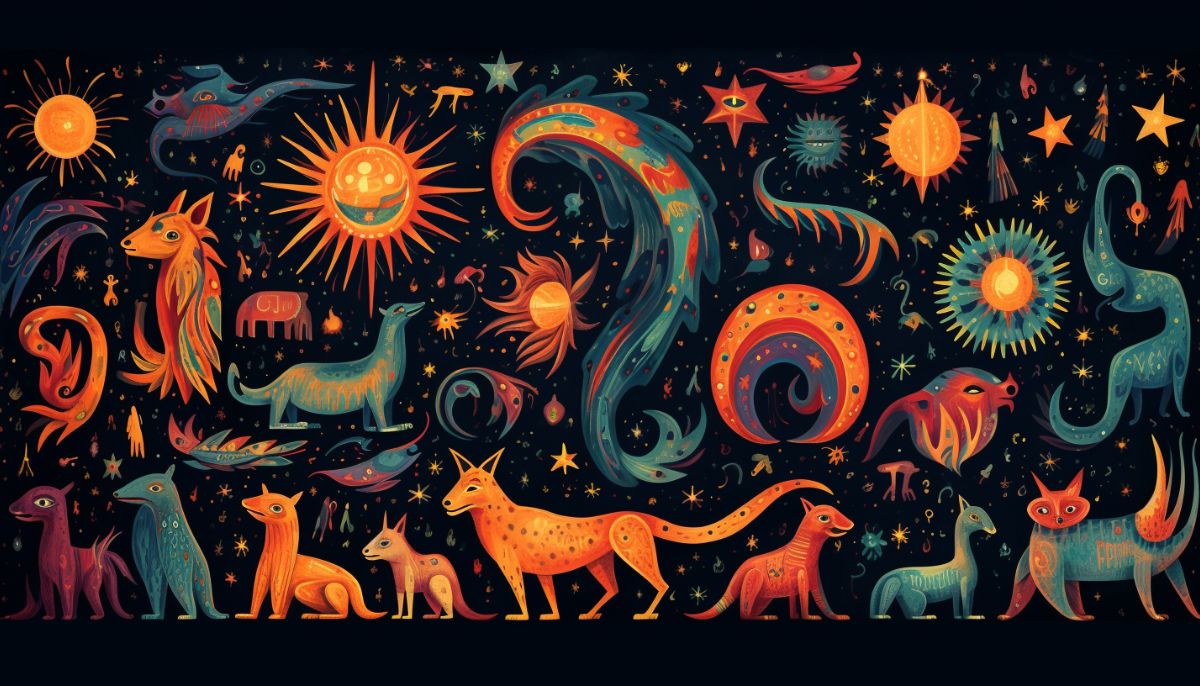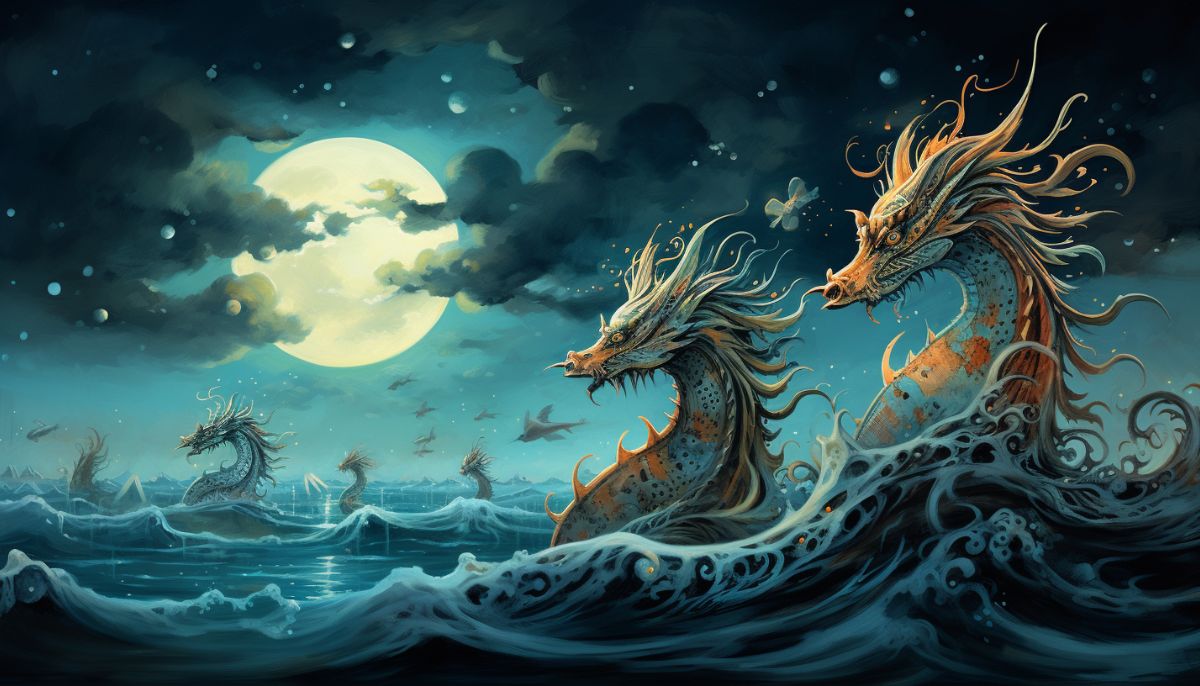In the depths of ancient Greek mythology lies a realm teeming with enigmatic creatures, where the vast expanse of the sea conceals mysteries beyond imagination. Among these maritime enigmas, the Ketea emerge as formidable Greek sea monsters, their presence felt in tales that span from treacherous voyages to epic battles.
From the menacing Ethiopian sea monster to the Trojan sea monsters that guarded sacred shores, these mythical beings embody the awe-inspiring power and danger of the ocean’s depths.
Join us on a journey through the waves of Greek mythology, as we unveil the legends and lore of these captivating sea monsters that have captured the imaginations of generations.
What is a Ketus?
In Greek mythology, the terms “Ketus” and “Ketea” (with “Cetus” in its Latinized form) are interchangeably used to describe these elusive and enigmatic sea creatures. These beings were known to prowl the depths of the Mediterranean and beyond, adding a layer of mystery to the vast expanse of the open sea.
These formidable beings were predominantly depicted as serpentine fish, distinguished by their sinuous bodies and a menacing array of sharp teeth. They were known to strike fear into the hearts of sailors and adventurers who dared to traverse the treacherous waters inhabited by these colossal sea monsters.
What did Mythical Greek sea monsters look like?

Greek mythology offered diverse sea monsters, and Ketus was no exception. These creatures were characterized by their elongated, serpentine forms, evoking a sense of primordial dread with their formidable rows of razor-sharp teeth.
Ketos were colossal in scale, rivaling the size of mighty ships. The sheer dimensions of these creatures were awe-inspiring, with skulls spanning an astounding 40 feet (12 meters) in length.
Their spines boasted a formidable thickness, measuring a cubit. In stature, they stood taller at the shoulder than even the mightiest of elephants, a testament to their colossal presence in the realm of sea creatures.
Often, Nereides, the sea nymphs, were depicted riding side-saddle on the backs of these monstrous beings, harnessing their power.
Is a ketus a Kraken?
No, a Ketus is not a Kraken. It’s essential to distinguish Ketus from the more widely known Kraken of Norse mythology. While both are formidable sea monsters, their origins, and mythological contexts differ significantly.
The Kraken emerged later in Icelandic sagas during the Middle Ages and remains distinct from the ancient Greek Ketus. Although these creatures share some commonalities due to universal human experiences, such as the perils of seafaring, their unique mythologies and cultural origins set them apart.
Famous Sea Monsters in Greek Mythology

In the intricate tapestry of Greek mythology, stories often intertwine, creating a rich and sometimes perplexing narrative.
This complexity is nowhere more evident than in the tales of sea monsters haunting ancient Mediterranean waters. Two such legends, the Ethiopian Sea Monster, and the Trojan Sea Monster, share striking similarities, hinting at a deeper connection.
As we delve into these narratives, it becomes apparent that the accounts have likely evolved through various sources, interwoven over time, to shape the enigmatic history of Greek myth.
These stories, though distinct, bear the marks of a shared cultural heritage, offering us a fascinating glimpse into the intricacies of ancient storytelling.
The Ethiopian sea monster
In the ancient realm of Ethiopia, a menacing sea monster known as the Ketos Aithiopios emerged as a devastating menace.
The angered sea god Poseidon unleashed this monster upon the kingdom, provoked by Queen Kassiopeia’s assertion that her daughter Andromeda surpassed even the Nereides in beauty.
Why did Poseidon harass Ethiopia with a sea monster?
Poseidon’s vengeful act directly responded to Queen Kassiopeia’s hubristic claims. Her audacity in declaring her daughter’s beauty superior to that of the Nereides, sea nymphs known for their exceptional allure, could not go unanswered.
To re-establish divine order and restore his honor, Poseidon summoned the terrifying sea monster to terrorize the shores of Ethiopia.
Andromeda and the Ketus
Caught in the throes of this calamity, Andromeda, the Queen’s daughter, found herself chained to a desolate rock by the unforgiving sea.
This cruel act was meant to serve as a sacrificial offering to the ravenous Cetus, a gruesome fate that awaited her.
Perseus vs. the Sea Monster
Just as hope seemed lost, fate intervened in the form of Perseus. Returning from his quest to slay the Gorgon Medusa, Perseus came upon the scene.
With unyielding courage, he faced off against the monstrous sea-being. Armed with either his sword or the petrifying gaze of Medusa’s severed head, Perseus emerged victorious over the Cetus, vanquishing the creature that had terrorized Ethiopia’s shores.
In another version of this timeless tale, Heracles confronted the sea monster, displaying his extraordinary might to rescue Hesione from its clutches.
This heroic feat serves as a testament to the enduring courage and strength exhibited by these legendary figures in the face of unimaginable peril.
The Trojan Sea Monster
In the annals of Greek mythology, the Trojan Sea Monster, known as the Ketos Troias, looms large as a harrowing threat unleashed upon the city of Troy.
This colossal sea beast was sent by the sea god Poseidon, his retribution for King Laomedon’s grave transgression—the refusal to compensate the deities for their invaluable services in fortifying the city’s defenses.
What monster did Poseidon send to Troy?
Enraged by Laomedon’s audacity, Poseidon conjured the Trojan Cetus, a nightmarish creature of the deep, to assail the shores of Troy.
The walls, which Poseidon and Aeacus had painstakingly erected to safeguard the city, stood impervious to mortal assault, but they offered no defense against this aquatic terror.
Hesione offered as a sacrifice
Seeking deliverance from the sea monster’s onslaught, King Laomedon sought counsel from an oracle. The prophecy was grim—the only means to placate the ravenous Cetus was to offer his own daughter, Hesione, as a sacrificial offering.
Bound to the rocks, Hesione awaited her dire fate, a heart-wrenching testament to the lengths her father was willing to go to for the safety of Troy.
Who killed the Trojan Sea monster?
Amidst this turmoil, the legendary Heracles arrived at Troy’s shores, drawn by the urgent plea for salvation.
Armed with unparalleled strength and unyielding determination, Heracles confronted King Laomedon, proposing a bargain: he would vanquish the Trojan Cetus and save Hesione, but in return, he demanded the Golden Vine and divine horses gifted to Tros by Zeus.
Desperate to free his daughter and rid his kingdom of the monstrous scourge, Laomedon agreed to Heracles’ terms.
Heracles vs. Trojan Sea monster
Facing the onslaught of the Trojan Cetus, Heracles unleashed a relentless barrage of arrows, each strike bringing the creature closer to its demise.
In some renditions, the hero entered the beast’s gaping mouth, delivering a fatal blow from within. The sea monster, once a fearsome force, succumbed to the might of Heracles and his indomitable resolve.
However, a bitter twist of fate awaited Troy after this heroic victory. King Laomedon, reneging on his promise, withheld the promised rewards, setting a chain of events in motion that would ultimately seal his tragic fate.
These tales, rooted in the deep waters of mythology, reveal the fascinating interplay between various legendary creatures, showcasing how Greek sea monsters find their place amid a pantheon of formidable beings. Within this dynamic, sea monsters hold a unique position, intertwining with other mythical entities to create a vibrant tapestry of ancient Greek lore.
Want to know more about the creatures and monsters of Greek Mythology?

Explore more articles like this in our broader series on Greek monsters. To delve even deeper into the world of mythical creatures, be sure to check out our comprehensive hub article on the monsters of Greek mythology.






